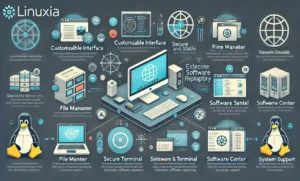How to Become a Freelancer: Side Hustle Pro Tips

What is Freelancing?
Have you ever wanted to make money and work on projects you love? Freelancing is like being your boss, but instead of selling things, you offer your skills or services to people who need them. Freelancing can include almost anything from writing stories, drawing pictures, designing websites, and even helping someone organize their schedule. In this guide, you will learn essential steps and strategies on ‘How to Become a Freelancer: Side Hustle Pro Tips’ to launch and manage your freelancing career successfully.
How to Become a Freelancer: Side Hustle Pro Tips
To start as a freelancer, you need to figure out what you are good at and what you can offer to others. Are you great at math? You could help other kids with their homework. Or, if you love drawing cartoons, you could make artwork for websites!
Step 1: Discover Your Skills
Becoming a freelancer is all about discovering and understanding your skills. This initial step is crucial because it defines the services you’ll offer. Begin by listing everything you’re good at and activities you enjoy. This could include anything from drawing, writing, and programming to more straightforward tasks like organizing, cleaning, or even making people laugh. Think about what people often compliment you for or the tasks you find easy while others might struggle.
It’s essential to recognize that every skill has potential value, no matter how simple it seems. There is a diverse range of needs out there, and various people are looking for help with different tasks. Your skills can provide solutions to someone’s challenges. By identifying your strengths and passions, you create a foundation for your freelancing journey, offering marketable, enjoyable, and fulfilling services for you to perform. This approach ensures that your freelance work remains sustainable and rewarding over the long term.
Step 2: Set Up Your Workspace
Maintaining a dedicated work area helps minimize distractions and maximize output. This space doesn’t need to be large or elaborate but should be a specific area where you can work without interruptions. It could be a small desk in your bedroom, a corner of the living room, or even a section of the kitchen table, as long as it is designated for your work.
The key to a functional workspace is organization and minimalism. Keep it tidy by having only the necessary items like your computer, notebooks, and any tools specific to your freelancing tasks. This helps in reducing clutter, which can distract you and hamper your efficiency. A well-organized workspace enhances your ability to concentrate and signals to others in your home that you are in a professional mode, helping to minimize disturbances. Remember, a clear space promotes a clear mind, enabling you to produce your best work.
Step 3: Tell People About Your Services
Spread the word about your services. People must know what you can do so they think of you when they need someone with your skills. Begin by informing your closest circle: family and friends. They can be your first clients or can help refer you to others. Word of mouth is a powerful tool in building a client base.
Additionally, consider making flyers that highlight your services. These can be distributed around your neighborhood, at local community centers, or in other public places where people gather. Flyers are a great way to catch the eye of potential local clients who might need what you offer.
In today’s digital age, also take advantage of online platforms. With the help of an adult, set up profiles on social media or community forums and post about your services. This expands your reach, connecting you with potential clients beyond your local area. By effectively communicating what you do, you open up many more opportunities to grow your freelancing business.
Understanding Freelancing Platforms
Understanding freelancing platforms is vital for anyone looking to start or expand their freelancing career. These platforms are digital marketplaces where freelancers can connect with potential clients worldwide. Websites like Upwork, Freelancer, Fiverr, and Etsy serve as hubs where you can list your services, showcase what you can do, and allow clients who need those services to hire you.
These platforms are set up to accommodate various skills and services. For example, Upwork and Freelancer cater to a broad spectrum of professional services, including writing, graphic design, web development, and consulting. At the same time, Fiverr simplifies the process with a focus on gigs that start at five dollars, which is ideal for smaller, more specific tasks. Etsy is perfect for those selling handmade goods, art, and crafts.
When using these platforms, you create a profile that details your skills, experience, and, sometimes, work samples. Clients can review these profiles and choose the freelancer who fits their project needs best. Most platforms also provide a rating system where clients can leave feedback based on their satisfaction with your work, which can be crucial for building your reputation on the site.
Navigating these platforms requires understanding their rules, fee structures, and how they facilitate interactions between freelancers and clients. Effective use of these sites can significantly increase your visibility and access to a broad range of job opportunities, helping you to grow your freelancing business from a local to a global scale.
Step 4: Join Freelancing Websites
Step 4 involves joining freelancing websites, essential tools for expanding your reach and accessing a global marketplace. Platforms like Fiverr, Upwork, and Etsy act as virtual hubs for freelancers, allowing them to display their talents and attract clients globally.
Setting up profiles on these sites should be done thoughtfully. For a strong online presence, especially for younger users, collaborate with an adult to build a comprehensive and professional profile. This includes a warm and inviting headshot, a concise bio highlighting your skills and experience, and a showcase of your work if available. Each site has its focus:
- Fiverr is great for small, quick gigs.
- Upwork suits longer-term projects.
- Etsy is ideal for selling handmade crafts and art.
When your profile is set up, you can start applying for jobs or posting your offerings, depending on the site’s format. Tailoring your applications to each job and maintaining professionalism in all communications is essential. As you complete jobs and gain positive reviews, your reputation on these platforms will grow, opening up more opportunities and potentially leading to a steady workflow.
Step 5: Set Your Prices
Setting your prices is a critical step that can significantly influence your success. Determining the right price for your services balances being competitive and ensuring you are fairly compensated for your time and skills. It’s essential to consider several factors when setting your prices.
Firstly, research what others in your field are charging for similar services. This will give you a benchmark and ensure your rates align with the market. Think about the complexity of the tasks you offer and the time it takes to complete them. More complex or time-intensive tasks should naturally command higher rates.
When starting your freelance journey, consider offering slightly lower prices initially. This can be a great way to attract clients and build your portfolio with completed projects and positive client reviews. As your experience and positive feedback grow, you can confidently adjust your prices to match your increasing value. This approach allows you to adjust your rates as your reputation and demand grow.
Always communicate your pricing clearly and justify the rates with the quality and value you provide. Communicating your pricing structure is crucial, as well as highlighting the quality and value you deliver. This transparency builds trust with clients and fosters a solid professional relationship.
Managing Your Freelance Work
For a thriving freelance career, effective workload management is essential. This ensures you can deliver projects on time while maintaining a healthy work-life balance. Managing your freelance work involves several key aspects that ensure you remain professional, meet your deadlines, and maintain good client relationships.
Firstly, organization is paramount. You should have a system for tracking all your projects, including their deadlines, specific requirements, and the agreed-upon payment terms. Tools like digital calendars, project management software, or even a simple spreadsheet can help you keep an overview of all ongoing tasks.
Secondly, it’s essential to be aware of your financials. Know how much you will earn from each project and record payments received and invoices issued. This helps manage your cash flow and is crucial when handling your taxes.
Freelance work hinges on clear and consistent communication. Keep a log of all interactions with your clients. Respond promptly to messages and provide updates proactively. This ensures transparency and builds trust, which is foundational for fostering long-term working relationships.
Building a successful freelance career requires a three-pronged approach: meticulous organization, meticulous financial record-keeping, and open communication with clients.
Step 6: Stay Organized
Organization is key to both efficiency and client satisfaction. It ensures timely project completion and leaves a positive impression. Effective organization ensures you meet deadlines and helps manage your workload without becoming overwhelmed.
To stay organized, start by creating a detailed schedule. Plot your project deadlines, meetings, and work sessions in a digital or physical calendar. This visual overview of your commitments helps you manage your time effectively and avoid overbooking.
Tools like Google Calendar or project management apps like Trello or Asana can be handy for setting reminders and prioritizing tasks.
Adhering strictly to deadlines is vital. Completing your projects on time shows professionalism and respect for your client’s schedule, which can significantly influence their satisfaction and likelihood of rehiring or recommending you. Being reliable can set you apart in a competitive freelancing market.
Moreover, regularly update your schedule as new projects or tasks are completed. This habit ensures you’re always aware of upcoming deadlines and can plan your workload accordingly. Organized freelancers often find they can handle more projects effectively, boosting their earning potential and career growth.
Step 7: Do Great Work
Doing great work is pivotal in establishing a successful freelancing career. The quality of your work directly influences your reputation and future job opportunities. In a freelance environment where competition is high, delivering exceptional results is the most effective way to distinguish yourself and foster client loyalty.
Consistently doing great work involves more than just meeting the minimum requirements of a project. It means going the extra mile:
- Paying close attention to detail.
- Being creative.
- Delivering more than what was expected.
Ensure that each work you submit is meticulously checked and represents your highest quality standard.
Pride in your work is crucial. Your interactions with clients and the finished product will reflect this confidence if you are genuinely proud of your services. Satisfied clients are more likely to return for more services and recommend you to others, expanding your network through positive word of mouth.
Remember, every project you complete builds your portfolio and contributes to your professional image. High-quality work leads to positive testimonials and a solid portfolio, which are invaluable for attracting new clients and growing your freelancing career.
Dealing with Challenges
In freelancing, encountering challenges is part of the journey, and how you handle these obstacles can significantly impact your career’s trajectory. Challenges such as managing an overwhelming number of projects simultaneously or dealing with client dissatisfaction are common. However, every challenge also brings an opportunity to improve and adapt.
When projects pile up, effective time management and prioritization become crucial. It might be necessary to reassess deadlines and communicate openly with clients about realistic timelines. Honesty and transparency in communication can prevent misunderstandings and maintain trust.
When faced with client dissatisfaction, prioritize finding a solution that addresses their concerns and restores satisfaction. Listen carefully to their concerns, ask for specific feedback, and be willing to make adjustments. This salvages a project and often strengthens the client relationship by demonstrating your commitment to their satisfaction.
Viewing challenges as learning opportunities encourages personal and professional growth, enabling you to become more resilient and adaptable as a freelancer.
Step 8: Ask for Feedback
Always ask for feedback on your work. This means asking the person if they liked what you did and how you can improve. It helps you get better. This step is critical because it provides insights into your performance from the perspective of those who matter most—your clients. Constructive feedback affirms what you are doing well and highlights areas where you can improve, making it a powerful tool for professional growth.
Asking for feedback should be a routine part of completing any project. After delivering your work, invite your clients to share their thoughts on the process and the final product. Ensure you ask specific questions to make the feedback valuable and actionable. For example, please inquire about the clarity of your communications, the effectiveness of your deliverables, and their satisfaction with your adherence to the project’s timeline.
While receiving feedback, especially not positive feedback can be difficult, embracing it with an open mind is essential for personal and professional growth. Use the insights gained to refine your skills, adjust your processes, and better meet your clients’ needs. This proactive approach enhances your expertise and demonstrates your commitment to excellence and continuous improvement, which can lead to more satisfied clients and increased referrals.
Step 9: Keep Learning
Learning continually is vital to maintaining and enhancing your freelancing career. With industries and technologies undergoing rapid transformations, continuous learning becomes the cornerstone of staying relevant and maintaining a competitive edge. It enriches your skill set and expands your range of services, making you more attractive to a broader clientele.
There are numerous resources available for ongoing education. Platforms like Coursera, Udemy, and LinkedIn Learning provide a vast library of online courses, encompassing both technical skills like coding and graphic design and essential soft skills like communication and time management. Many of these courses are designed to accommodate busy schedules, providing flexibility to learn at your own pace.
Besides formal courses, consuming content related to your field in books, podcasts, webinars, and articles can also significantly enhance your knowledge. Engaging with online communities and forums where professionals discuss the latest trends and best practices can provide current and practical insights.
Committing to lifelong Learning ensures that you keep up with your industry’s developments and continue offering high-quality, updated services to your clients, solidifying your reputation as a knowledgeable and versatile freelancer.
Frequently Asked Questions
What is the best age to start freelancing?
You can start freelancing when you feel ready to manage small projects. There’s no perfect age, but starting young gives you lots of time to learn and grow.
How much money can a beginner freelancer make?
It depends on what services you offer and how often you work. At first, you might make a little, but as you get better, you can make more.
Can I freelance if I need to improve my computer skills?
Yes! Not all freelancing jobs require computers. You can offer services like pet sitting, babysitting, or lawn mowing.
What skills are most in demand for freelancers?
The demand varies by industry, but skills such as writing, graphic design, web development, digital marketing, and social media management are highly sought after. It’s essential to research and identify which skills are in demand in your chosen field.
How do I find my first clients?
Start by leveraging your network; let friends, family, and acquaintances know about your services. You can also use social media platforms and freelancing websites to reach potential clients. Attending industry networking events and participating in online forums can also be effective.
Is freelancing a stable career choice?
Freelancing can offer substantial financial and personal rewards but may need more stability than a traditional job. Success often depends on consistently securing projects and managing your finances effectively. Many freelancers combine multiple income streams to increase strength.
How do I handle taxes as a freelancer?
It’s essential to understand your tax obligations as a freelancer. Depending on your location, you may need to file taxes as self-employed. For tax compliance and potential deduction opportunities, seeking guidance from a tax professional is highly recommended.
What are the common challenges faced by freelancers?
Common challenges include:
- Inconsistent workflow.
- Managing multiple clients.
- Maintaining work-life balance.
- Handling all aspects of business operations.
Developing strong organizational and time-management skills is crucial to navigate these challenges effectively.
Conclusion: Why Freelance?
Freelancing offers a unique and flexible way to capitalize on your talents while earning an income. It’s not just about making money; it’s a learning experience that teaches valuable life skills such as collaboration, financial management, and personal responsibility. As a freelancer, you gain the ability to work with diverse clients, broadening your understanding of various industries and professional practices. One of the most significant benefits is its autonomy; you can design your work schedule. This flexibility allows you to balance work with other essential aspects of life, like education, social activities, and personal interests, making freelancing an appealing career choice for many.






